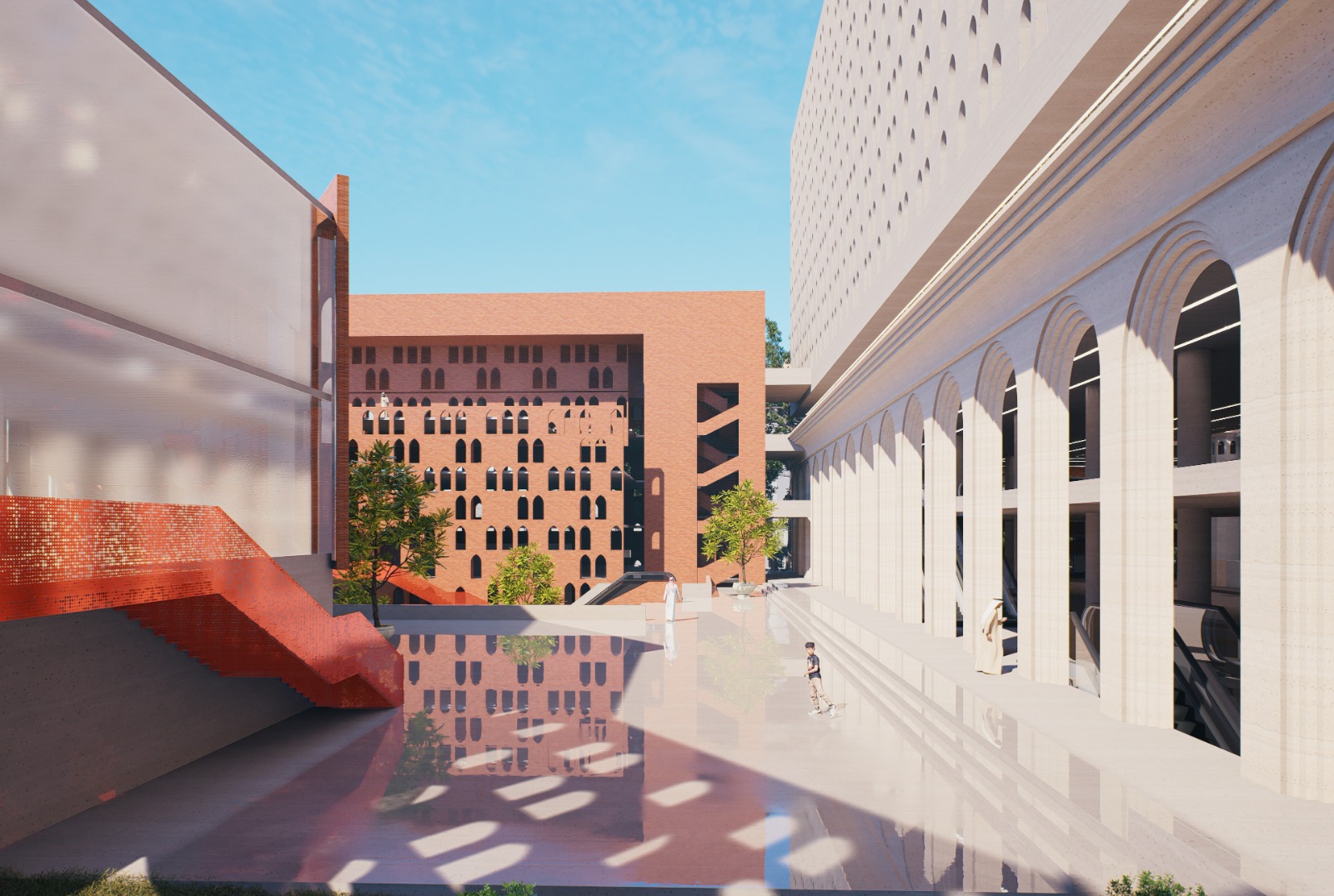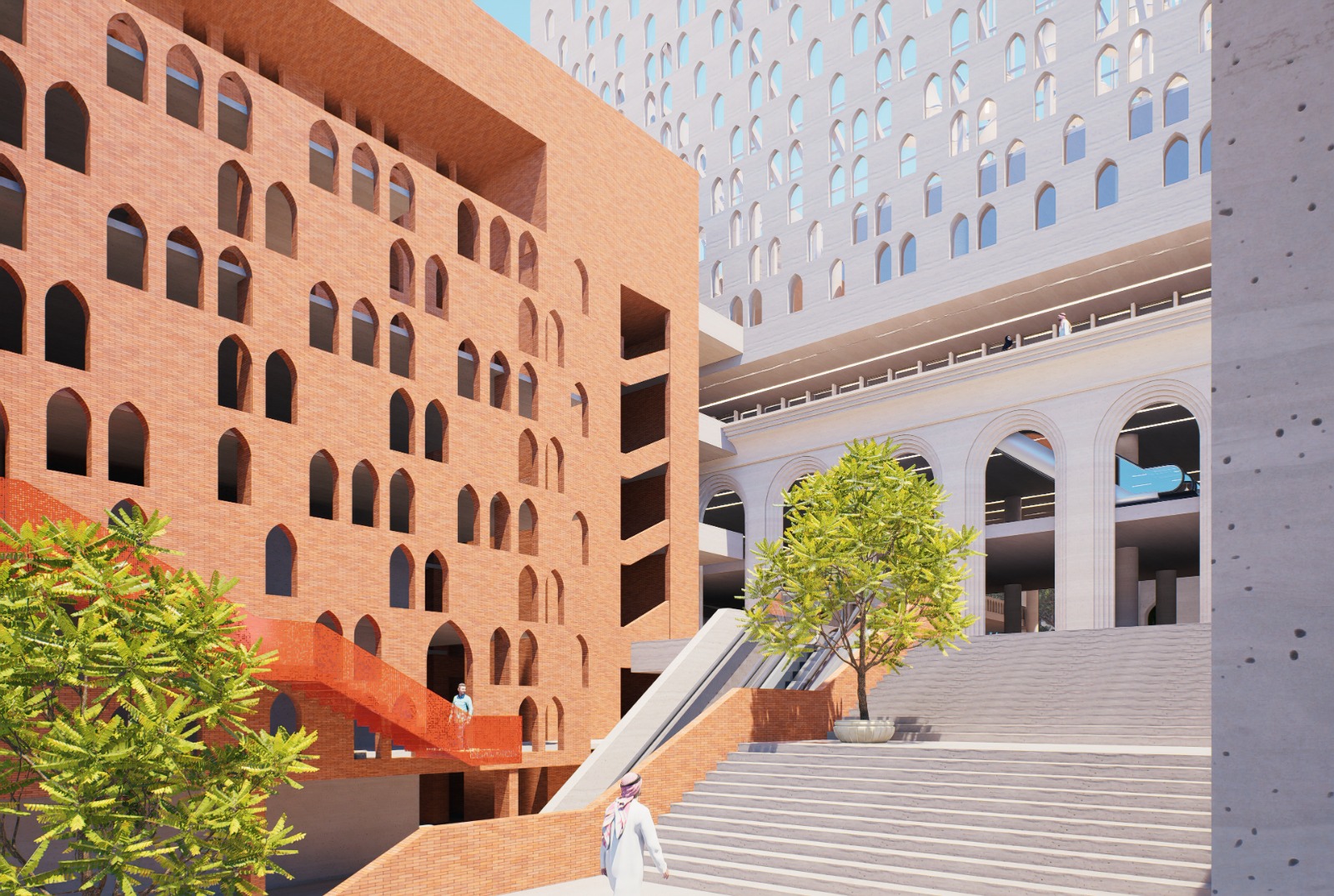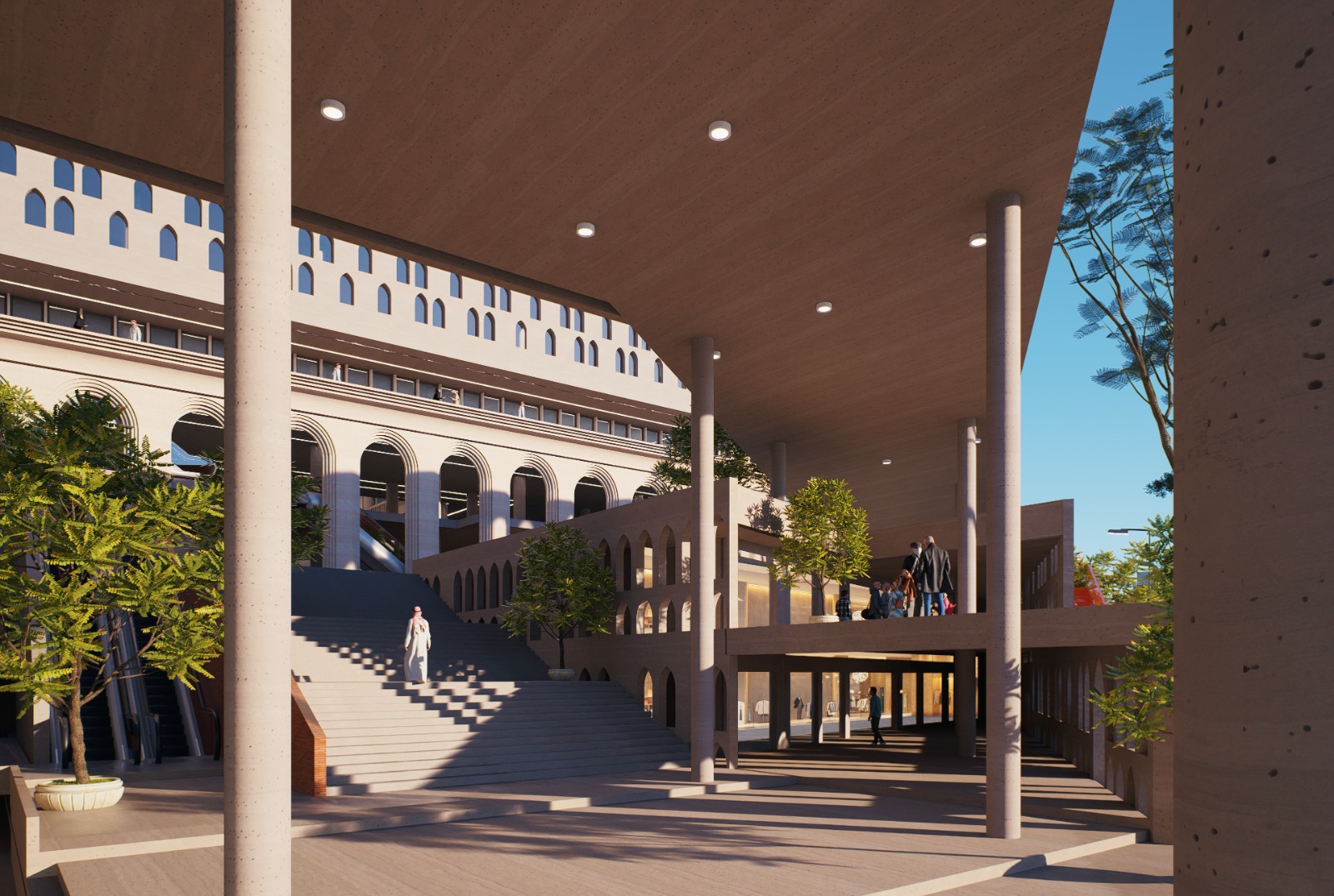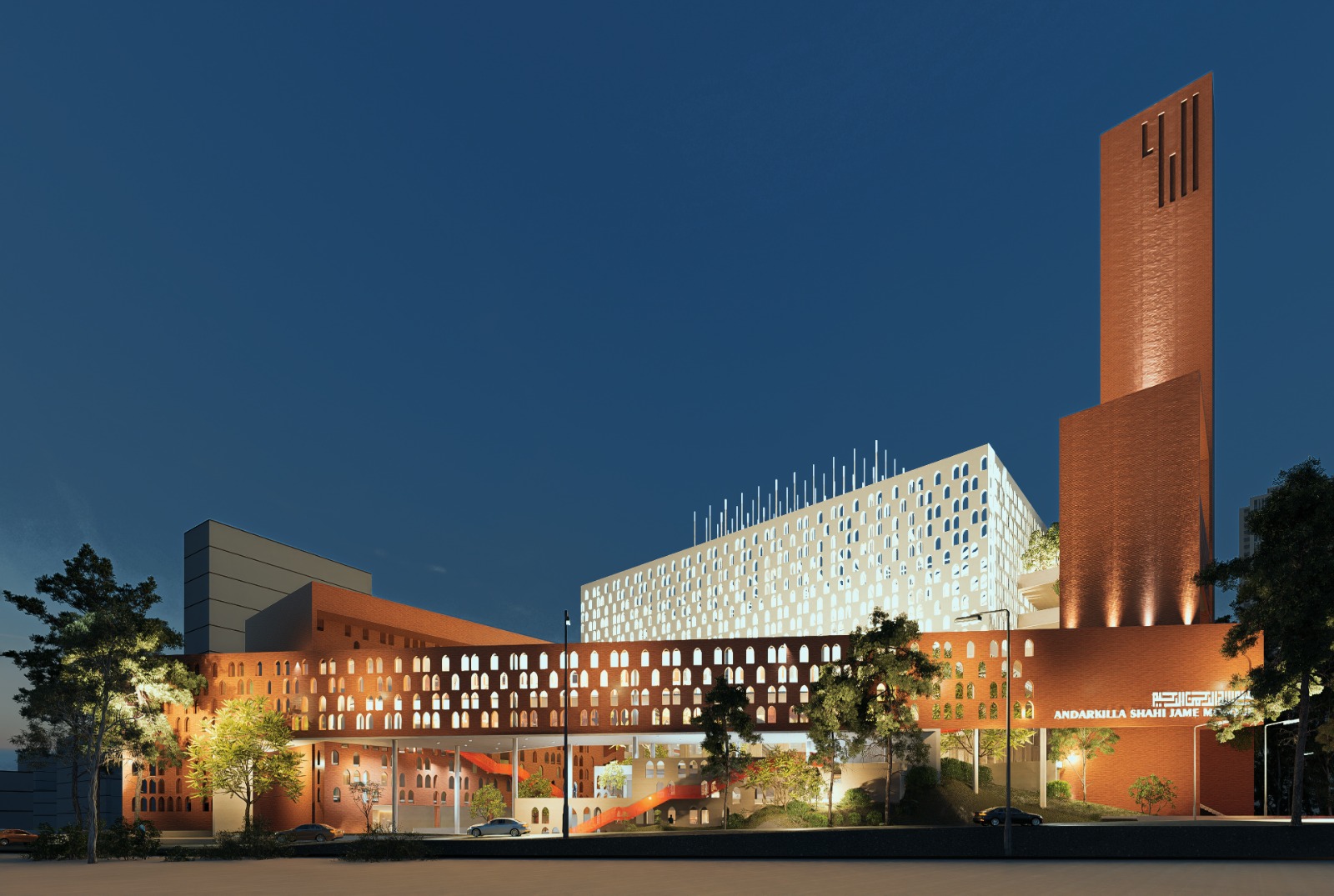
ANDARKILLA SHAHI JAM E MOSHJID
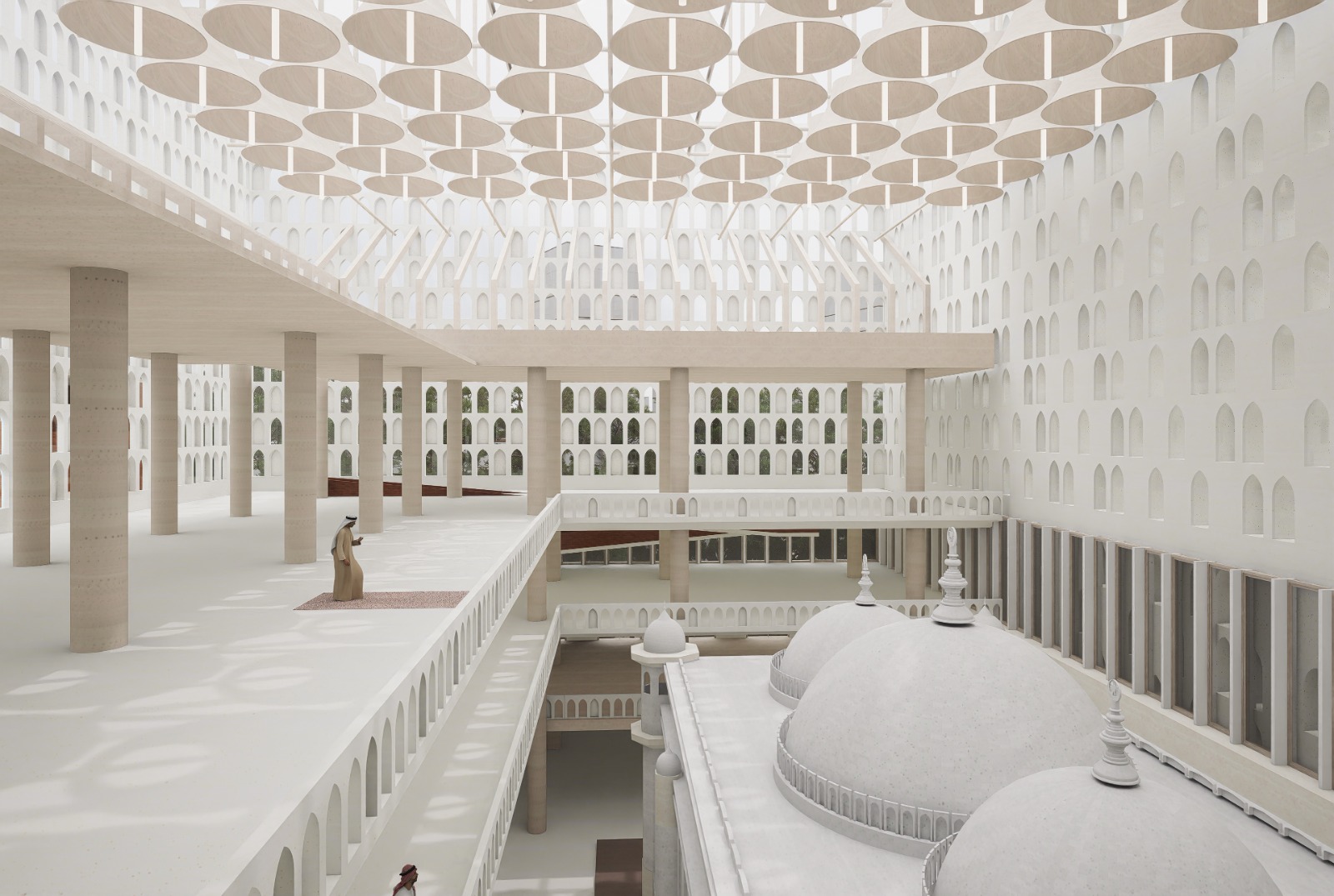
-
Phone:
+880 1717-882506 -
Email:
info.idabd@gmail.com -
Adress:
70-71/ R-03, Janata housing.
Adabor
Focusing on both heritage preservation and capacity building:
Preserving Mughal Heritage While Expanding for Contemporary Needs
The Andarkilla Shahi Jame Mosque, built in 1667 by Umed Khan (son of Shaista Khan), is one of the earliest Mughal-era structures in Chattogram. Perched atop a hill known as Ander-Qila (“inner fort”), the mosque is a symbol of historical triumph and architectural elegance. However, over time, unplanned expansions and surrounding developments have obscured its original form and limited its capacity to serve a growing urban population.
The design emphasizes uncovering and restoring the mosque’s original architectural elements—arches, domes, and inscriptions—while removing intrusive additions that compromise its visibility and integrity.
Visual Reconnection: The mosque is re-elevated as a visual landmark by clearing obstructive surroundings and reintroducing its prominence in the urban skyline.
Split-Site Concept: The site is divided into two zones—one preserving the historic mosque on the hill, and the other a man-made mound housing new facilities like:
- Islamic foundation offices
- Educational institutions
- Cultural market
- Library and visual entertainment hall
Inclusive Design: The proposal advocates for gender-inclusive prayer spaces and public amenities, challenging traditional restrictions and promoting equality.
Public Plaza ("Maidan"): A grand central plaza is introduced to foster community interaction, spiritual gathering, and cultural exchange.
